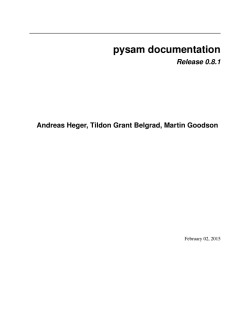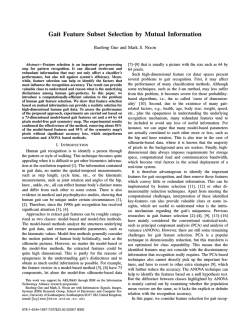
arXiv:1501.07435v1 [hep
CERN-PH-TH-2015-012 Natural Quasi-Alignment with two Higgs Doublets and RGE Stability F. J. Botellaa, 1 , G. C. Brancob,c,d,2 , Ant´onio M. Coutinhob,3 , M. N. Rebelob,4 and J. I. Silva-Marcosb,5 a Departament de F´ısica Te`orica and IFIC, Universitat de Val`encia - CSIC, E-46100, Burjassot, Spain arXiv:1501.07435v1 [hep-ph] 29 Jan 2015 b Centro de F´ısica Te´orica de Part´ıculas - CFTP, c Departamento de F´ısica, Instituto Superior T´ecnico - IST, Universidade de Lisboa - UL, Avenida Rovisco Pais, 1049-001 Lisboa, Portugal d Theory Group, Physics Department, CERN, CH-1211, Geneva 23, Switzerland Abstract In the context of two Higgs doublet models, we study the conditions required in order to have stable quasi-alignment in flavour space. We show that stability under the RGE imposes strong constraints on the flavour structure of the Yukawa couplings associated to each one of the Higgs doublets. In particular, we find a novel solution, where all Yukawa couplings are proportional to the so-called democratic matrix. This solution is rather unique, since it is the only stable solution which is a good starting point for reproducing the observed pattern of quark masses and mixing. We also show that this stable solution can be obtained by imposing on the Lagrangian a Z3 × Z30 flavour symmetry. Quark masses of the lighter quark generations are generated through the breaking of this discrete symmetry, and, at this stage, scalar mediated FCNC arise, but are naturally suppressed by the smallness of light quark masses. In this way, we relate Higgs alignment to the hierarchy of quark masses through a discrete family symmetry. 1 E-mail: [email protected] [email protected] 3 E-mail: [email protected] 4 E-mail: [email protected] 5 E-mail: [email protected] 2 E-mail: 1 Introduction One of the simplest extensions of the Standard Model (SM) consists of the addition of scalar doublets to the SM spectrum. Multi-Higgs extensions arise in a variety of frameworks, including supersymmetric extensions of the SM, as well as models with family symmetries. A two Higgs doublet model (2HDM) was first introduced by Lee [1], in order to achieve spontaneous breaking of the CP symmetry. If no extra symmetries are introduced, 2HDMs lead to too large tree level scalar mediated flavour-changing-neutral-currents (FCNC) [2]. In order to avoid these potentially dangerous currents, various schemes have been proposed: i) Glashow and Weinberg [3] have pointed out that one can avoid FCNC at tree level by introducing a Z2 symmetry under which the two Higgs doublets transform differently. The introduction of a Z2 symmetry in 2HDMs prevents the generation of spontaneous CP breaking [4] unless the symmetry is softly broken [5]. ii) Pich and Tuzon [6] have conjectured the existence of flavour alignment of the two Yukawa matrices, thus avoiding FCNC at tree level. This is an interesting suggestion, but it has the drawback of being an adhoc assumption, not explained by any symmetry. Furthermore, it has been pointed out that in general this scheme is not stable under the renormalization group [7]. There have been attempts at obtaining alignment in various extensions of the SM [8], [9], [10]. iii) Another possibility has been proposed some time ago [11] by Branco, Grimus and Lavoura (BGL) who have pointed out that there is a symmetry which, when imposed on the Lagrangian, constrains the Yukawa couplings in such a way that FCNC do arise at tree level, but are entirely determined by the VCKM matrix, with no other free parameters. In some of the BGL models, one has a strong natural suppression of the most dangerous FCNC, with, for example, the strangeness changing neutral currents, proportional to (Vtd Vts∗ )2 , which implies a very strong natural suppression of the contribution to the K 0 − K¯0 transition. With this suppression, the neutral Higgs masses need not be too large. BGL models have been extended to the leptonic sector [12], their relation to Minimal Flavour Violation models has been studied [13] and their phenomenological implications have been recently analysed [14]. In this paper, we reexamine the question of the stability of flavour alignment under the renormalization group. Assuming that the Yukawa couplings of the two Higgs doublets are aligned, i.e., proportional to each other, we study under what conditions the alignment is maintained by the renormalization group. Apart from the conditions already found in Ref.[7], we find new solutions which can be of great physical interest. One of these solutions, corresponds to having all the Yukawa coupling matrices proportional to the so-called democratic matrix [15], [16], [17]. This solution is rather unique, since on the one hand it is stable under the renormalization group equations (RGE) and on the other hand, it is the only stable solution which provides a good starting point for reproducing the observed pattern of quark masses and mixing. We then point out that this flavour democratic solution can be obtained as a result of a Z3 × Z30 flavour symmetry. In the framework that we propose, flavour alignment is exact in the limit where only the third family acquires mass. Once the two light generations acquire a mass, there are small deviations from alignment, which are suppressed by the strong hierarchy of quark masses. As a result, one obtains in this framework, a quasi-alignment of the Yukawa couplings, as a result of the Z3 × Z30 symmetry, together with the strong hierarchy of quark masses. 1 The paper is organised as follows. In the next section, we briefly describe the general flavour structure of the 2HDM, in order to settle our notation. In section 3 we derive all the solutions for the Yukawa couplings, leading to alignment, stable under the renormalization group. In section 4 we show that the flavour democratic solution can be obtained as a result of a Z3 × Z30 flavour symmetry and propose an ansatz for the breaking of the Z3 × Z30 symmetry. In section 5, we examine the suppression of scalar mediated FCNC in our framework. In section 6, we perform a numerical analysis, showing how the pattern of quark masses and mixing can be obtained in the framework of our ansatz. Finally our conclusions are contained in section 7. In the Appendix we present a full study of the solutions of the alignment conditions. 2 Yukawa Couplings in the General Two-Higgs-Doublet-Model (2HDM) For completeness and in order to establish our notation we briefly review the flavour structure of the 2HDM, when no extra symmetries are introduced in the Lagrangian. The Yukawa couplings can be written: LY = −Q0L Γ1 Φ1 dR0 − Q0L Γ2 Φ2 dR0 − Q0L Ω1 Φ˜ 1 u0R − Q0L Ω2 Φ˜ 2 u0R − LL0 Π1 Φ1 lR0 − LL0 Π2 Φ2 lR0 + h.c. (1) e i ≡ i τ2 Φ∗ and Γi , Ωi , Πi are matrices in flavour space. After where Φi denote the Higgs doublets and Φ i spontaneous symmetry breaking, the following quark mass matrices are generated: 1 Mu = √ (v1 Ω1 + v2 e−iα Ω2 ) 2 1 Md = √ (v1 Γ1 + v2 eiα Γ2 ) , 2 (2) √ where vi / 2 ≡ | < 0|φ0i |0 > | and α denotes the relative phase of the two vacuum expectation values (vevs) of the neutral components φ0i of Φi . The neutral and the charged Higgs interactions with quarks are of the form: 1 v LY (quark, Higgs) = −dL0 [Md H 0 + Nd0 R + i Nd0 I] dR0 + 1 − u0L [Mu H 0 + Nu0 R + i Nu0 I] u0R + v √ 2H + 0 0 0 † + (uL Nd dR − u0R Nu0 dL0 ) + h.c. v (3) q where v ≡ v21 + v22 ≈ 246 GeV and H 0 , R are orthogonal combinations of the fields ρ j , arising when one iα j expands [1] the neutral scalar fields around their vevs, φ0j = e√2 (v j + ρ j + iη j ), choosing H 0 in such a way that it has couplings to the quarks which are proportional to the mass matrices, as can be seen from Eq. (3); similarly, I denotes the linear combination of η j orthogonal to the neutral Goldstone boson. The matrices Nd0 and Nu0 are given by: 1 Nd0 = √ (v2 Γ1 − v1 eiα Γ2 ), 2 1 Nu0 = √ (v2 Ω1 − v1 e−iα Ω2 ) 2 2 (4) The quark mass matrices are diagonalized through † UdL Md UdR = Dd ≡ diag(md , ms , mb ), (5) † UuL Mu UuR = Du ≡ diag(mu , mc , mt ). and the matrices Nd0 and Nu0 in the mass eigenstate basis transform into: † UdL Nd0 UdR = Nd , † UuL Nu0 UuR = Nu . (6) There are similar expressions for the leptonic sector. We do not introduce neutrino masses since these are not relevant for our analysis. 3 Stability of the aligned 2HDM under RGE The aligned two Higgs doublet model (A2HDM) is defined at tree level by the following relations involving the matrices introduced in Eq. (1): Γ2 = d · Γ1 Ω2 = u · Ω1 Π2 = e · Π1 (7) where d, u, e are constants. In this section we analyse the stability of the A2HDM under renormalisation group equations (RGE). The one loop renormalization group equations (RGE) for the Yukawa couplings are [18], [7]: D Γk = aΓ Γk + 2 h i † † † † + ∑ 3Tr Γk Γl + Ωk Ωl + Tr Πk Πl + Σk Σl Γl + l=1 2 −2Ωl Ω†k Γl + Γk Γ†l Γl + +∑ l=1 1 1 Ωl Ω†l Γk + Γl Γ†l Γk 2 2 , (8) D Ωk = aΩ Ωk + i 2 h + ∑ 3Tr Ωk Ω†l + Γ†k Γl + Tr Σk Σ†l + Π†k Πl Ωl + l=1 2 +∑ −2Γl Γ†k Ωl + Ωk Ω†l Ωl + l=1 3 1 1 Γl Γ†l Ωk + Ωl Ω†l Ωk 2 2 , (9) D Πk = aΠ Πk + 2 i h † † † † + ∑ 3Tr Γk Γl + Ωk Ωl + Tr Πk Πl + Σk Σl Πl + l=1 2 +∑ −2Σl Σ†k Πl + Πk Π†l Πl + l=1 1 1 Σl Σ†l Πk + Πl Π†l Πk 2 2 , (10) where D ≡ 16π2 µ (d/dµ) and µ is the renormalization scale. The coefficients aΓ , aΩ and aΠ are given by: 5 2 9 aΓ = −8g2s − g2 − g0 4 12 17 2 9 aΩ = −8g2s − g2 − g0 4 12 9 2 15 0 2 aΠ = − g − g 4 4 (11) (12) (13) where gs , g and g0 are the gauge coupling constants of SU(3)c , SU(2)L and U(1)Y respectively. The alignment relations given by Eq. (7) guarantee the absence of Higgs mediated FCNC at tree level because both matrices Md and Nd are proportional to Γ1 . Similarly both Mu and Nu are proportional to Ω1 and Ml , Nl to Π1 . In general, these relations are broken at one loop level. From Eqs. (8),(9),(10) one can easily derive: o n D (Γ2 ) − d · D (Γ1 ) = (u∗ − d) (1 + ud) 3Tr Ω†1 Ω1 − 2Ω1 Ω†1 Γ1 + + (e − d) (1 + e∗ d) Tr Π†1 Π1 Γ1 (14) n o D (Ω2 ) − u · D (Ω1 ) = (d ∗ − u) (1 + ud) 3Tr Γ†1 Γ1 − 2Γ1 Γ†1 Ω1 + † + (e − u) (1 + eu) Tr Π1 Π1 Ω1 ∗ (15) D (Π2 ) − e · D (Π1 ) = 3 (d − e) (1 + d ∗ e) Tr Γ†1 Γ1 Π1 + +3 (u∗ − e) (1 + eu) Tr Ω†1 Ω1 Π1 (16) In order to enforce Eq. (7) at one loop level it is easy to realize that it is sufficient to impose: D (Γ2 ) − d · D (Γ1 ) ∝ Γ1 D (Ω2 ) − u · D (Ω1 ) ∝ Ω1 D (Π2 ) − e · D (Π1 ) ∝ Π1 (17) (18) (19) in fact the proportionality constants on the r.h.s. are the running 6 of d, u and e. Therefore Eq. (16) does not impose any constraint: at one loop level the charged lepton sector remains aligned and there are no FCNC in the leptonic sector. This result agrees with the findings of references [19] and [20]. 6 The autors of reference [7] impose the r.h.s. of Eqs. (14),(15,(16) to be equal to zero. This amounts to imposing alignment at one loop level and imposing additionally that there is no running of the parameters u, d and e. 4 In equations (14), and (15) the pieces that can break the alignment in the quark sector are the terms: Ω1 Ω†1 Γ1 and Γ1 Γ†1 Ω1 respectively7 . In order to have alignment at one loop level - fulfilling Eqs(17), (18)- there are two types of solutions: 1. (u∗ − d) (1 + ud) = 0 2. Ω1 Ω†1 Γ1 = λΓ Γ1 and Γ1 Γ†1 Ω1 = λΩ Ω1 . With λΓ and λΩ complex numbers. Solutions of type 1 include the usual 2HDM with natural flavour conservation (NFC), where the up and down quarks receive contributions from only one Higgs doublet. It is well known that this can be achieved through the introduction of a Z2 symmetry. Here, we are not interested in this class of well known solutions. We are interested in the class of solutions of type 2, and in the Appendix, we have studied the complete set of matrices Ω1 and Γ1 that obey to the conditions required for this class of solutions. We have shown in the Appendix, that if one requires stability under the RGE and at the same time Yukawa structures which are, in leading order, in agreement with the observed pattern of quark masses and mixing, then one is lead to a unique solution, where the matrices Ω1 and Γ1 are of the form: Ω1 = cd1 ∆ ; Γ1 = cu1 ∆ with ∆ the democratic mass matrix: (20) 1 1 1 ∆= 1 1 1 1 1 1 (21) This solution corresponds to the limit where only the top and bottom quarks acquire mass, while the two first generations are massless. The up and down quarks are aligned in flavour space, so the VCKM matrix equals the identity. The other stable solutions of type 2 correspond to non realistic cases like for example having all up or down quarks massless or two up or two down quark masses degenerate or with a VCKM very far from the identity matrix. It is remarkable to realise that the so called democratic mass matrix is stable under RGE and that precisely this stability also enforces what could be called ”quark alignment” in the sense that we also have a proportionality among Γi and Ωi . 4 Natural Quasi-Alignment of Yukawa couplings In this section we search for the minimal symmetry which when imposed on the Lagrangian, leads to the stable solution described in the previous section, corresponding to the democratic Yukawa couplings of Eq. (20). Before describing this symmetry, it is worth analysing another type of alignment which is verified experimentally, the so-called up-down alignment in the quark sector. can be readily seen that Ω1 Ω†1 Γ1 ∝ Mu Mu† Md and Γ1 Γ†1 Ω1 ∝ Md Md† Mu . It is worth emphasizing that these structures are precisely the ones obtained in [19] and in [20], which produce FCNC at one loop level. 7 It 5 4.1 The up-down alignment in the quark sector In the quark sector, flavour mixing is small. This means that there is a weak basis (WB) where both Mu , and Md are close to the diagonal form. Experiment indicates that not only flavour mixing is small, but there is also up-down flavour alignment in the quark sector in the following sense. We can choose, without loss of generality, a WB where Mu = diag(mu , mc , mt ). Of course, this is just a choice of ordering, with no physical meaning. Small mixing implies that in this WB Md is almost diagonal. In principle, since the Yukawa couplings Yu , Yd are not constrained in the SM, there is equal probability of Md being close to Md = diag(md , ms , mb ). corresponding to up-down alignment, or being close for instance to Md = diag(mb , ms , md ) in which case there is up-down misalignment. It is clear that in the SM, assuming small mixing and hierarchical quark masses, the probability of obtaining up-down alignment is only 1/6. Given a set of arbitrary quark mass matrices Mu , Md , one can derive necessary and sufficient conditions to obtain small mixing and up-down alignment, expressed in terms of WB invariants [21]. Since the experimentally verified up-down alignment is not automatic in the SM, one may wonder whether there is a symmetry which leads to up-down alignment. In the next subsection, we propose a symmetry which leads to up-down alignment in the quark sector and when extended to a 2HDM leads to a natural alignment of the two Higgs doublets in flavour space. 4.2 Z3 × Z30 symmetry and the two Higgs alignment We introduce the following Z3 × Z30 symmetry under which the quark left-handed doublets Q0Li , the righthanded up quarks u0Li , and the right-handed down quarks dL0i transform in the following way: Q0Li −→ Pi†j Q0L j , u0Ri −→ Pi j u0R j , (22) dR0 i −→ Pi j dR0 j , where Z3 corresponds to P = 1 + E1 and Z30 to P = 1 + E2 with: 1 1 1 −1 0 −1 2 ω − 1 21 ω−1 1 −1 1 0 ; E2 = E1 = −1 2 2 2 3 0 0 0 −1 −1 2 2πi (23) and ω = e 3 . The Higgs doublets transform trivially under Z3 × Z30 . The above symmetry leads to the following form for the Yukawa matrices Γ j = cdj ∆, Ω j = cuj ∆, corresponding to the stable solution of Eq. (20). This can easily be checked since ∆E1 = ∆E2 = 0. We thus conclude that the symmetry of Eqs. (22), (23) leads to the alignment of the two Yukawa coupling matrices, with a democratic flavour structure. Note that this solution also guarantees an up-down alignment in the quark sector, as defined in the previous subsection. In order to give mass to the first two quark generations, the Z3 × Z30 symmetry has to be broken. This breaking will also lead to Higgs mediated FCNC, but these couplings will be suppressed by the smallness of the quark masses. In order to illustrate how a realistic pattern of quark masses and mixing can be obtained, we 6 shall assume that the breaking of the Z3 × Z30 symmetry occurs in two steps. In the first step the symmetry Z3 × Z30 is broken into just one of the Z3 and the second generation acquires mass and finally in the last step the mass of the quarks u, d is generated. In the first step the symmetry Z3 × Z30 is broken to Z3 generated by P = 1 + E1 . One can check that: 0 0 1 Γ j = cdj (∆ + εd A) ; Ω j = cuj (∆ + εu A) ; A= 0 0 1 (24) 1 1 1 are invariant under this Z3 symmetry. Note that A E1 = 0. At this stage the second generation acquires mass. Finally, the lightest quarks, u and d acquire mass through a small perturbation, proportional to δˆ d,u , which breaks this Z3 symmetry. We assume that: Γ2 = cd2 ∆ + εd A + δˆ d Bd (25) while Γ1 = cd1 (∆ + εd A) ; with equivalent expressions for the up sector. Here 0 0 1 Bu = 0 0 0 ; 1 0 1 (26) 0 0 1 Bd = 0 0 0 1 0 η (27) where η is some complex number with modulus of order one. The symmetry is broken, and neither Bu nor Bd are invariant under the Z3 × Z30 symmetry. 5 Suppression of scalar mediated FCNC In order to study the suppression of scalar mediated FCNC, it is useful to start by analysing the parameter space in our framework. 5.1 The Parameter Space From Eqs. (2), (25) and (26) it follows that, in leading order 3 3 mb = √ cd1 v1 + cd2 v2 eiα ; mt = √ cu1 v1 + cu2 v2 e−iα 2 2 q √ Writing v ≡ v21 + v22 = v1 1 + t 2 , with v2 t= v1 7 (28) (29) we obtain in leading order the following relations: d √ c + cd teiα 2 mb 1 √ 2 = ; 2 3 v 1+t u √ c + cu te−iα 2 mt 1 √ 2 = 2 3 v 1+t (30) which impose restrictions on the allowed parameter space. A priori, we do not assume any conspiracy between parameters and take t = O(1). It is then clear from Eq. (30), that the cui are generically of order one, while cdi are smaller, and may assume values of order O( mmbt ). This is an important ingredient which, as we shall see, will play a rˆole in the evaluation of the strength of FCNC’s and the allowed parameter space for the Higgs masses. Next we give the structure of the flavour changing neutral Yukawa couplings. For that, it is useful to express the quark mass matrices in Eq. (2) in terms of the perturbations given in Eqs. (25), (26): Md = v1 √ 2 cd1 + cd2 teiα [∆ + εd A + δd Bd ] Mu = v1 √ 2 cu1 + cu2te−iα [∆ + εu A + δu Bu ] δd ≡ cd2 teiα d c1 +cd2 teiα δu ≡ cu2 te−iα u c1 +cu2 te−iα b δd ; (31) b δu Then, we derive the expressions for the matrices which couple to the Higgs scalars in Eqs. (3), (4). In the basis where the up and down quark matrices are diagonal, the matrices Nd , Nu of Eq. ( 6) become Nd = t Dd − √v12 1 + t 2 eiα Ud†L Γ2 UdR (32) Nu = t Du − √v12 1 + t 2 e−iα Uu†L Ω2 UuR where we have used Eqs. (4) and (6) with Eq. (2). Finally, from Eq. (32) combined with Eqs. (25) and Eq. (31) we find √ Nd = cd1 t−cd2 eiα cd1 +cd2 teiα Nu = cu1 t−cu2 e−iα cu1 +cu2 te−iα Dd − √v2 Du − cd1 1+t 2 t √ cu 1+t 2 √v 1 t 2 δd Ud†L Bd UdR (33) δu Uu†L Bu UuR where Dd ≡ diag(md , ms , mb ), Du ≡ diag(mu , mc , mt ). The crucial point is that in our scheme these matrices have an extra suppression factor, proportional to δd,u . Using the expressions given in Eqs. (31), (27) and computing the trace, second invariant and determinant for the squared quark mass matrices Hu,d ≡ MM † u,d , one can find that in leading order: δd = √ qm m 3 mds mbs = O λ3 √ q m 5 u c δu = 3 m mc mt = O λ where λ ≡ 0.2 is of the order of the Cabibbo angle. 8 (34) From Eq. (31) it follows that in leading order UdL = UuL = UdR √ √ 1/ √2 1/√6 F == −1/ 2 1/ √6 0 −2/ 6 = UuR = F, where √ 1/√3 1/√3 1/ 3 (35) is the matrix that diagonalizes the exact democratic limit ∆. Thus, taking into account Eq. (27), the matrix contributions from Ud†L Bd UdR and Uu†L Bu UuR are both of order one. One can thus conclude that: –for the down sector, with the assumptions made after Eq. (30), we have a total suppression factor of O( mmbt ) · O λ3 –for the up sector, we have a suppression factor of O λ5 or smaller depending on the value that we choose to assume for cu1 , but which, as explained, it is reasonable to take of order one. 6 Numerical analysis The matrices of Eq. (31) may be explicitly written as 1 1 1+ε+δ 1 1 1+ε+δ 1 1 1 + ε , Md = c d 1 1 1+ε , Mu = cu 1+ε+δ 1+ε 1+ε+δ u 1+ε+δ 1+ε 1+ε+ηδ d where we have introduced cd ≡ v1 √ (cd 2 1 + cd2 t eiα ), and cu ≡ v1 √ (cu + cu2 t e−iα ). 2 1 (36) Although these two coeffi- cients are in general complex, and since the physically meaningful matrices are those defined as H = M M † , both coefficients may be taken as real for our numerical exercise. If one then parametrizes the remaining variables as ε = εm exp i ε f , δ = δm exp i δ f , η = ηm exp i η f , (37) one is left with twelve real parameters that compose the quark mass matrices in our scheme. In order to check if this parameter space could accommodate the flavour sector, a numerical survey was made where we looked for one combination that could fit the observed values of the quark masses given at the scale of the Z boson mass [22], the moduli of the entries of the CKM matrix [23], the strength of CP violation ICP and sin 2β and γ [23], with β and γ being two of the angles of the unitarity triangle. A simple run of all twelve parameters produced a “reference point”: c εm εf δm δf ηm ηf Up-sector 56.73 1.6 × 10−2 −5.6 × 10−3 8.1 × 10−4 π + 0.32 — — 9 Down-sector 0.89 0.11 0.41 2.2 × 10−2 2.26 4.99 π + 0.62 0.000033 0.74 0.000032 Sin@2ΒD È ICP È 0.72 0.000031 0.00003 0.000029 0.70 0.68 0.66 0.000028 0.64 0.64 0.66 0.68 0.70 0.72 0.74 0.00340 0.00345 0.00350 Sin@2ΒD 0.00355 0.00360 0.00365 0.00370 ÈVubÈ Figure 1: We present scatter plots showing |ICP | versus sin 2β and sin 2β versus |Vub | obtained by varying randomly the input parameters around the reference point. which yields the output values: Dd = diag(0.00204, 0.05824, 2.85356) GeV, Du = diag(0.00114, 0.61736, 171.684) GeV, 0.9745 0.2244 0.0036 |VCKM | = 0.2243 0.9737 0.0415 , 0.0087 0.0407 0.9991 (38) |ICP | = 3.0 × 10−5 , sin 2β = 0.69, γ = 69.3◦ . It should be noted that the twelve parameters fix not only VCKM and the quark mass spectrum, but also the strength of all the FCNC couplings. In order to evaluate the numerical stability of this reference point, we performed a numerical check, varying the input parameters randomly around the values that produced the reference point above; the new results were then combined in the scatter plots shown in Fig. 1 where the reference point is highlighted. In order to obtain an estimate of the lower bound for the flavour-violating 0 Higgs masses, we consider the contribution to K 0 − K mixing. Apart from the SM box diagram one now has a New Physics contribution arising from the scalar-mediated FCNC tree-level diagrams thus making SM + M NP , [14] with: the total transition amplitude equal to M12 = M12 12 2 2 2 m mM mM fM M NP 1+ C1 (H) − 1 + 11 C2 (H) , (39) M12 = ∑ 2 2 mq1 + mq2 mq1 + mq2 H=R,I 96 v mH where: C1 (R) = and Nq2q1 ∗ 2 + Nq1q2 , C2 (R) = ∗ 2 C1 (I) = − Nq2q1 − Nq1q2 , Nq2q1 ∗ 2 − Nq1q2 , ∗ 2 C2 (I) = − Nq2q1 + Nq1q2 . (40) (41) The indices q1 and q2 refer to the valence quarks of the meson M, and N is Nu or Nd depending on the meson system considered. 10 1200 mI GeV 1000 800 600 400 200 200 400 600 800 1000 1200 mR GeV Figure 2: Plot showing the allowed region for mI and mR , taking into account the constraint on ∆mK . In this framework it is a good approximation to use the matrix F for√ both UdL and UdR . Using the values we obtained for δd and taking, as already discussed, t ' 1 and cd1 ' 32 mvb , the new physics contribution to 0 K becomes solely dependent on f , m , m and m . In K 0 − K , both M K and ΓK are relevant for the M12 K K R I 12 12 NP in the neutral kaon system does not mass difference ∆mK . It is reasonable to impose the constraint that M12 exceed the experimental value of ∆mK . Adopting as input values the PDG experimental determinations of fK , mK and ∆mK [24], one is left with combinations of mR and mI where our model respects the inequality NP (K) M12 < ∆mK . The region plot that we have obtained is presented in Fig.2. It is clear that in this framework, the masses of the flavour-violating neutral Higgs can be below the TeV scale, so that they could be discovered at the next run of the LHC. 7 Conclusions We have studied in detail, in the framework of 2HDM, the question of stability of alignment, under the renormalization group. It was shown that there are new stable solutions, apart from those found in Ref. [7]. Stability under the RGE puts very strict restrictions on the flavour structure of the Higgs Yukawa couplings. If one imposes the stability conditions and at the same time requires that the flavour structure is in agreement with the observed pattern of quark masses and mixing, then one is lead to a unique solution, where all Higgs flavour matrices are proportional to the so-called democratic matrix. We have also shown that these flavour structures leading to stable alignment can be obtained by imposing on the Lagrangian a Z3 × Z30 symmetry. In the limit where this symmetry is exact, only the third generation of quarks acquires a mass. Nonvanishing masses for the two first generations are obtained through the breaking of the discrete symmetry which in turn generates scalar mediated FCNC which are suppressed by the smallness of the light quark masses. The scenario presented in this paper establishes a possible intriguing link between stability of alignment in 2HDM and the observed pattern of quark masses and mixing. 11 Appendix: Solutions to the alignment conditions The solutions to the alignment conditions Ω1 Ω†1 Γ1 = λΓ Γ1 ; Γ1 Γ†1 Ω1 = λΩ Ω1 (42) can be obtained by the following steps. First we define the Hermitian matrices HΓ = Γ1 Γ†1 ; HΩ = Ω1 Ω†1 (43) It is easy to show that λΓ and λΩ are real. This can be achieved by multiplying the first equation by its Hermitian conjugate an inserting the second equation ( and viceversa) to get λΩ HΩ2 = |λΓ |2 HΓ (44) λΓ HΓ2 = |λΩ |2 HΩ (45) it follows from these equations that both λΩ and λΓ should be real since one has two identities among Hermitian matrices. Now multiplying each of the Eqs. (42) on the right by Γ†1 and Ω†1 respectively we get HΩ HΓ = λΓ HΓ ; HΓ HΩ = λΩ HΩ (46) HΓ HΩ = λΓ HΓ ; HΩ HΓ = λΩ HΩ (47) λΓ HΓ = λΩ HΩ (48) [HΓ , HΩ ] = 0 (49) and taking Hermitian conjugates therefore and we conclude that implying that VCKM = I up to permutations of rows or columns. Denoting the usual bi-unitary diagonalisation procedure by (50) Γ1 = VLΓ DΓVRΓ† ; Ω1 = VLΩ DΩVRΩ† from Eq. (49) we conclude that we can always choose the unitary matrices VLΓ and VLΩ equal to each other VLΓ = VLΩ (51) and the alignment conditions can be easily reduced to conditions among the diagonal matrices DΓ and DΩ . From Eq. (46), it then follows that: D2Ω DΓ = λΓ DΓ ; D2Γ DΩ = λΩ DΩ (52) It can be checked that there are only two types of solutions. Those with λΓ and λΩ different from zero (solutions 1,2 and 3) and the remaining ones (solutions 4 and 5 ) 1. DΓ = aP3 and DΩ = αP3 and changes of P3 by P2 or P1 12 2. DΓ = a (I − P1 ) and DΩ = α (I − P1 ) and changes of P1 by P2 or P3 3. DΓ = aI and DΩ = αI 4. DΓ = 0 and DΩ arbitrary and viceversa. 5. DΓ = aPi and DΩ = α (I − Pi ) where Pi stand for the projection operators (Pi ) jk = δi j δik (53) Solutions 2,3 and 4 cannot be good approximations to the actual quark spectra due to the implied degeneracy. Solution 5 gives rise to VCKM matrix very different from the identity matrix. Only solution 1 provides, in leading approximation the correct pattern of quark masses and mixing. In a suitable weak-basis, this solution can be written as a democratic matrix ∆. Acknowledgments This work is partially supported by Spanish MINECO under grant FPA2011-23596, by Generalitat Valenciana under grant GVPROMETEOII 2014-049 and by Fundac¸a˜ o para a Ciˆencia e a Tecnologia (FCT, Portugal) through the projects CERN/FP/123580/2011, PTDC/FIS-NUC/0548/2012, EXPL/FISNUC/0460/2013, and CFTP-FCT Unit 777 (PEst-OE/FIS/UI0777/2013) which are partially funded through POCTI (FEDER), COMPETE, QREN and EU. References [1] T. D. Lee, “A Theory of Spontaneous T Violation,” Phys. Rev. D 8 (1973) 1226. [2] G. C. Branco, P. M. Ferreira, L. Lavoura, M. N. Rebelo, M. Sher and J. P. Silva, “Theory and phenomenology of two-Higgs-doublet models,” Phys. Rept. 516 (2012) 1 [arXiv:1106.0034 [hep-ph]]. [3] S. L. Glashow and S. Weinberg, “Natural Conservation Laws For Neutral Currents,” Phys. Rev. D 15 (1977) 1958. [4] G. C. Branco, “Spontaneous CP Nonconservation and Natural Flavor Conservation: A Minimal Model,” Phys. Rev. D 22 (1980) 2901. [5] G. C. Branco and M. N. Rebelo, “The Higgs Mass in a Model With Two Scalar Doublets and Spontaneous CP Violation,” Phys. Lett. B 160 (1985) 117. [6] A. Pich and P. Tuzon, “Yukawa Alignment in the Two-Higgs-Doublet Model,” Phys. Rev. D 80 (2009) 091702 [arXiv:0908.1554 [hep-ph]]. 13 [7] P. M. Ferreira, L. Lavoura and J. P. Silva, “Renormalization-group constraints on Yukawa alignment in multi-Higgs-doublet models,” Phys. Lett. B 688 (2010) 341 [arXiv:1001.2561 [hep-ph]]. [8] H. Serodio, “Yukawa Alignment in a Multi Higgs Doublet Model: An effective approach,” Phys. Lett. B 700 (2011) 133 [arXiv:1104.2545 [hep-ph]]. [9] I. de Medeiros Varzielas, “Family symmetries and alignment in multi-Higgs doublet models,” Phys. Lett. B 701 (2011) 597 [arXiv:1104.2601 [hep-ph]]. [10] A. Celis, J. Fuentes-Martin and H. Serodio, “Effective Aligned 2HDM with a DFSZ-like invisible axion,” Phys. Lett. B 737 (2014) 185 [arXiv:1407.0971 [hep-ph]]. [11] G. C. Branco, W. Grimus and L. Lavoura, “Relating the scalar flavor changing neutral couplings to the CKM matrix,” Phys. Lett. B 380 (1996) 119 [hep-ph/9601383]. [12] F. J. Botella, G. C. Branco, M. Nebot and M. N. Rebelo, “Two-Higgs Leptonic Minimal Flavour Violation,” JHEP 1110 (2011) 037 [arXiv:1102.0520 [hep-ph]]. [13] F. J. Botella, G. C. Branco and M. N. Rebelo, “Minimal Flavour Violation and Multi-Higgs Models,” Phys. Lett. B 687 (2010) 194 [arXiv:0911.1753 [hep-ph]]. [14] F. J. Botella, G. C. Branco, A. Carmona, M. Nebot, L. Pedro and M. N. Rebelo, “Physical Constraints on a Class of Two-Higgs Doublet Models with FCNC at tree level,” arXiv:1401.6147 [hep-ph]. [15] G. C. Branco, J. I. Silva-Marcos and M. N. Rebelo, “Universal strength for Yukawa couplings,” Phys. Lett. B 237 (1990) 446. [16] H. Fritzsch, “Lepton - quark masses and democratic symmetry,” Nucl. Phys. Proc. Suppl. 40 (1995) 121 [hep-ph/9411419]. [17] G. C. Branco and J. I. Silva-Marcos, “Predicting V (CKM) with universal strength of Yukawa couplings,” Phys. Lett. B 359 (1995) 166 [hep-ph/9507299]. [18] W. Grimus and L. Lavoura, “Renormalization of the neutrino mass operators in the multi-Higgsdoublet standard model,” Eur. Phys. J. C 39 (2005) 219 [hep-ph/0409231]. [19] C. B. Braeuninger, A. Ibarra and C. Simonetto, “Radiatively induced flavour violation in the general two-Higgs doublet mod Phys. Lett. B 692 (2010) 189 [arXiv:1005.5706 [hep-ph]]. [20] M. Jung, A. Pich and P. Tuzon, “Charged-Higgs phenomenology in the Aligned two-Higgs-doublet model,” JHEP 1011 (2010) 003 [arXiv:1006.0470 [hep-ph]]. [21] G. C. Branco and J. I. Silva-Marcos, “Invariants, Alignment and the Pattern of Fermion Masses and Mixing,” Phys. Lett. B 715 (2012) 315 [arXiv:1112.1631 [hep-ph]]. [22] S. Antusch and V. Maurer, “Running quark and lepton parameters at various scales,” JHEP 1311 (2013) 115 [arXiv:1306.6879 [hep-ph]]. [23] CKMfitter Group http://ckmfitter.in2p3.fr/www/results/plots fpcp13/ckm res fpcp13.html 14 [24] K. A. Olive et al. (PDG Collaboration), “Review of Particle Physics,” Chin. Phys. C 38 (2014) 090001 15
© Copyright 2024
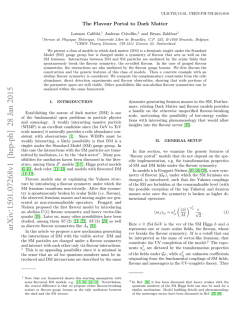
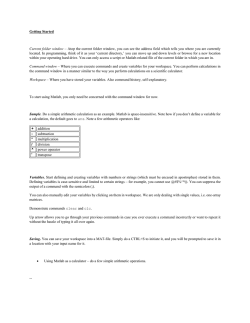
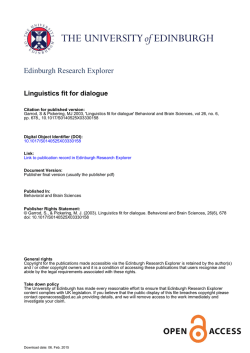
![arXiv:1501.06883v1 [nucl-ex] 27 Jan 2015](http://s2.esdocs.com/store/data/000469010_1-b3be2be1617ce0dc870c493784ed097f-250x500.png)

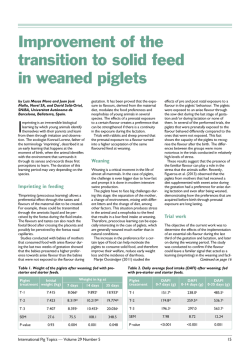
![arXiv:1501.07877v1 [hep-ex] 30 Jan 2015](http://s2.esdocs.com/store/data/000480916_1-3222ec79447e4cecd07304389d05d043-250x500.png)
